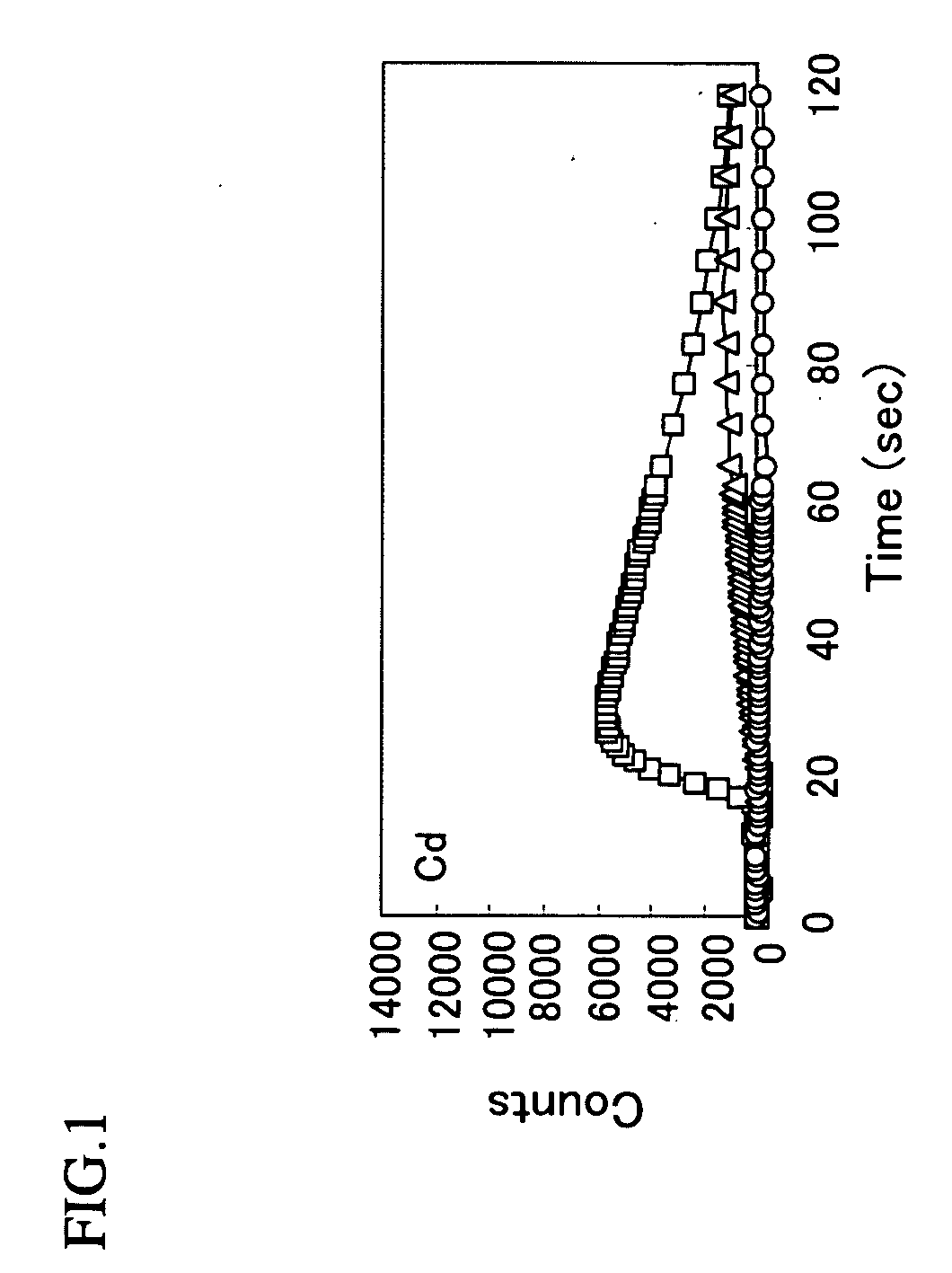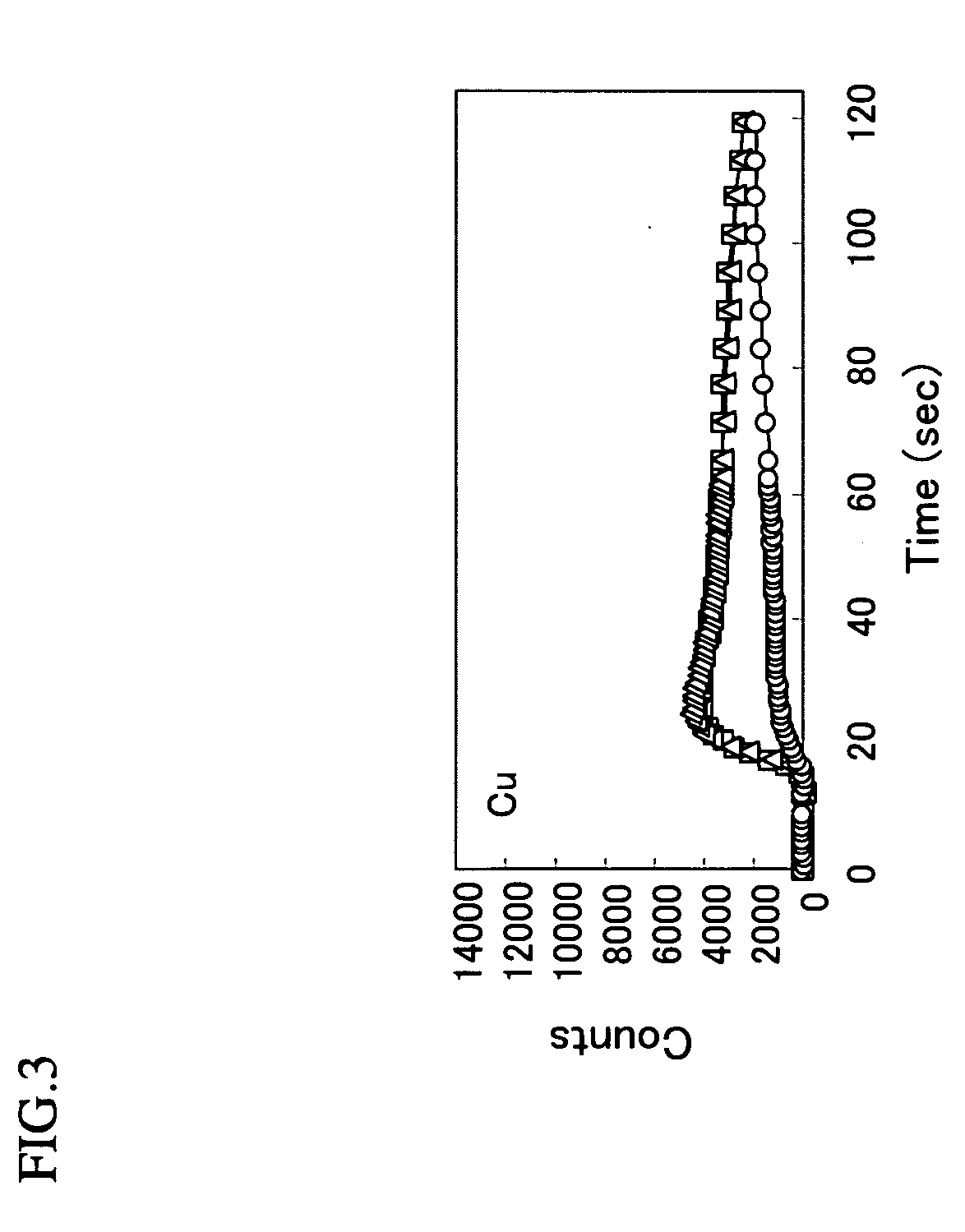Novel screening method
a technology screening method, which is applied in the field of g protein-coupled receptor protein, can solve the problems of difficult prediction of functions of their physiological ligands, and the functions of these g protein-coupled receptor proteins remain unresolved, so as to promote the secretion of cytokines, and reduce the resistance to infection.
- Summary
- Abstract
- Description
- Claims
- Application Information
AI Technical Summary
Benefits of technology
Problems solved by technology
Method used
Image
Examples
example 1
Acquisition of Human GPR39-GFP Fusion Protein-Expressing CHO Cells
[0570] An expression plasmid was constructed to express a fusion protein of Green Fluorescent Protein (GFP) cDNA isolated from jelly fish Auquorea victoria, fused to human GPR39 at the C terminus, so as to match the translation frame. In this case, a fragment excised from the expression vector pQBI25 (Takara Shuzo) for GFP was used as GFP cDNA. In the GPR39, its termination codon was corrected by PCR to the recognition sequence with restriction enzyme NheI, and the GFP fragment was ligated thereto, which was inserted into the expression vector pAKKO-111H (the same plasmid vector as pAKKO-1.11H described in Biochem. Biophys. Acta, Hinuma, S. et al., 1219, 251-259, 1994). Using this vector, the GPR39-GFP fusion protein-expressing CHO cells were acquired.
example 2
Detection of the Agonist Activity of Metal Elements for GPR39
[0571] Agonists for GPR39 were surveyed by the method described below and as a result, it was found that particular metal elements were agonists for GPR39.
[0572] The human GPR39-GFP expression vector-transfected CHO cell line produced in EXAMPLE 1 (CHO / hGPR39-GFP) was diluted in 3×104 cells / 100 μl. The dilution was dispensed onto a Black walled 96-well plate (Costar) in 100 μl each per well, followed by incubation overnight in a CO2 incubator. Changes in intracellular calcium levels were determined by the following method using FLIPR (Molecular Device). In 21 μl of DMSO (DOJIN), 50 μg of Fluo-3AM (DOJIN) was dissolved and an equal volume of 20% Pluronic acid (Molecular Probes) was added to the solution. After mixing them, the resulting mixture was added to 10.6 ml of assay buffer [prepared by adding 20 ml of 1M HEPES (pH 7.4) (DOJIN) to HBSS (Invitrogen Corp.) and further adding to the solution 10 ml of a solution mixtu...
example 3
Expression of Human GPR39 mRNA
[0573] The expression level of mRNA was assayed on ABI PRISM 7900HT SequenceDetector (Applied Biosystems, Inc.). Primers [5′-TGTGACATTGGCCGTATGCT-3′ (SEQ ID NO: 3) and 5′-CAGTCGTGCTTGGGTTTGG-3′ (SEQ ID NO: 4)] and probe [5′-TGCCCAACCAGATTCGGAGGATCA-3′ (SEQ ID NO: 5)] used for quantification of the expression level were designed based on the base sequence of human GPR39 (SEQ ID NO: 2) using software PrimerExpress (Applied Biosystems, Inc.) exclusively used for ABI PRISM SequenceDetector. As the cDNA to be used as a template, cDNA synthesized from 1 μg of total RNA derived from various human tissues and cells by reverse transcription using random primers. Reverse transcription was carried out according to the protocol attached, using SuperScriptII (GIBCO BRL) as reverse transcriptase. A reaction solution for ABI PRISM 7900HT SequenceDetector was prepared by mixing 7.5 μl of TaqMan Universal PCR Master Mix (Applied Biosystems, Inc.), 0.9 μM of each prime...
PUM
| Property | Measurement | Unit |
|---|---|---|
| temperature | aaaaa | aaaaa |
| temperature | aaaaa | aaaaa |
| temperature | aaaaa | aaaaa |
Abstract
Description
Claims
Application Information
 Login to View More
Login to View More - R&D
- Intellectual Property
- Life Sciences
- Materials
- Tech Scout
- Unparalleled Data Quality
- Higher Quality Content
- 60% Fewer Hallucinations
Browse by: Latest US Patents, China's latest patents, Technical Efficacy Thesaurus, Application Domain, Technology Topic, Popular Technical Reports.
© 2025 PatSnap. All rights reserved.Legal|Privacy policy|Modern Slavery Act Transparency Statement|Sitemap|About US| Contact US: help@patsnap.com



